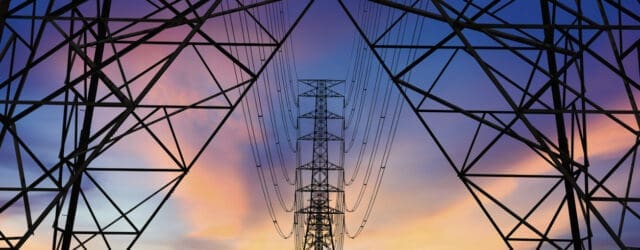Great Power, Great Responsibility: Plugging In – Reforming the Electrical Grid Connection Regime in the UK
June 2023A typical power generation project would until fairly recently have comprised construction of a fossil fuel, often gas-fired, power station. That power station would have been constructed on a site convenient for connection to the national electricity transmission grid, near an area of high demand.
Nowadays, at least here in the UK, a typical project is a windfarm located miles offshore a remote piece of coastline, far from demand and remote from the grid.
In what will become a regular series of articles we will look at the changes occurring in the global energy market and will explore their impacts on market participants – developers, funders, contractors, designers, operators and others.
This first article in the series looks at the changes to grid connection procedures that are being implemented as a result of the shift in the nature of power generation projects, and at the effects that those changes are likely to have on the industry.
Plugging In
Traditionally, contracts for connection to the grid were strictly first-come, first-served. In other words, if your project signed a connection contract after another project, your power station would be connected to the grid after that other power station – even if yours was complete and ready to go first. This procedure worked in the days of relatively few large power stations which needed little additional infrastructure work for connection to the grid.
The procedure has not, however, fared well as a consequence of the shift to renewable energy. Projects based on novel technologies such as floating wind may face unexpected technical issues. Projects such as wind farms and solar arrays often face planning objections. Smaller projects may face greater funding constraints. Completion of more remote projects is often held up by unforeseen ground conditions and, particularly offshore, inclement weather – and also by additional infrastructure work required to connect into the grid.
The result of all of this is that, in the UK, only 30-40% of projects with connection contracts are ever completed. The result of that, in turn, is a queue for grid connections in England and Wales well over a decade long. A project signing a connection contract in early 2023 is likely to achieve a grid connection in the late 2030s. Clearly that simply isn’t good enough to achieve the UK Government’s target to decarbonise the power sector by 2035.
All Change
On 27 February, the UK’s National Grid Electricity System Operator (ESO) implemented a ‘five-point plan’ to reduce the backlog for grid connections. The changes implemented as part of that plan will have resulted in some immediate improvements: the ability to terminate connection contracts without liability will have removed some ‘zombie projects’ from the queue, and the measures permitting more rapid connection of power storage projects will have benefited those projects.
However, a more fundamental revamp of the system is underway. On 17 May, the UK’s energy regulator Ofgem launched a policy review on reforming the electricity connection system. That review closed on 16 June and its results are to feed into an action plan, to be prepared jointly by Ofgem and the Government, which is expected to be released over the summer.
Whatever the outcome of that action plan, it seems almost inevitable that the first-come, first-served approach for grid connections will be ditched in favour of one which prioritises the projects that are progressing most rapidly. Indeed, before Ofgem’s review was even announced, the ESO’s five-point plan included development of “new contractual terms for connection contracts to manage the queue more efficiently so that those projects that are progressing can connect and those that are not can leave the queue”.
Danger Ahead?
On the face of it, that change seems clearly positive for the grid and for the UK’s net-zero ambitions. However, it introduces new areas of risk for market participants which will need to be carefully considered.
In particular, it seems inevitable that a project in delay will fall further back in the queue for grid connections. That gives rise to a number of questions, including
- How will that delay be assessed? Will developers face obligations to report on progress to ESO, and if so will those obligations be passed on to their construction teams? Alternatively, will ESO appoint independent consultants to assess project progress (likely at developers’ cost)?
- Any consultant reporting to ESO on progress (whether employed by a developer or by ESO directly) will need to think carefully about its liabilities and the types of losses it may be exposing itself to, and negotiate an appropriate liability regime in its appointment.
- The knock-on effect if a project falls down the queue could be very significant; the delay to grid connection may very well significantly exceed the delay in construction. Needless to say, the consequent delay to commencement of power generation, and to realising the project’s revenue stream, could have significant financial consequences for the developer.
- Indeed, ESO’s suggestion that projects that are not progressing “can leave the queue” may be read by some as a threat that connection contracts may be terminated – i.e. not just pushed down the queue – in the event of delay.
- Will this affect the bankability of power projects (renewable and otherwise)? Funders are well-versed in dealing with construction delays, but a grid connection contract with a specified connection date is fundamental to a project’s security package. Losing that certainty will likely make every project appear more risky to funders. Will funding become more difficult to obtain, or subject to more conditions, covenants and milestones?
- Developers will presumably seek to pass on to their construction team any consequences of delayed grid connections. Will we see liquidated damages-type penalty regimes, or gainshare/painshare mechanisms, implemented in construction contracts for power projects to address the risk of ESO action? These may sit reasonably well with EPC contracts (subject to the contractors’ risk appetite), but will that risk transfer be appropriate in more traditional design-build / build-only contracts, or subcontracts?
A little more clarity should emerge in the summer, once the joint Ofgem/Government action plan is released. This is expected to build on the Government’s March 2023 Powering Up Britain blueprint. We will of course report on that action plan once it is released.
However, in the interim, every market participant should be considering the impact that this upcoming regulatory sea-change might have on their projects, and what they should be doing about it.
Download PDF







